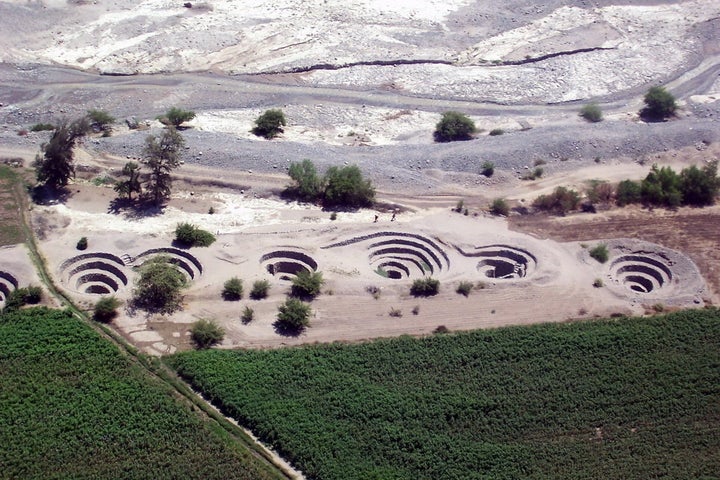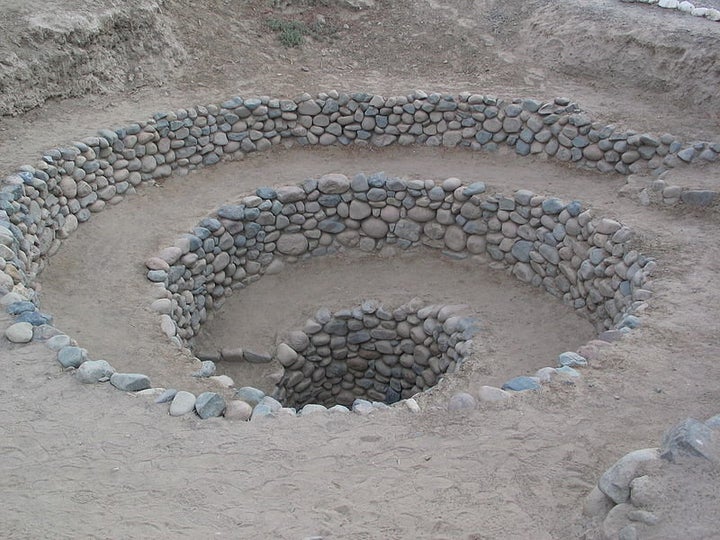Peru’s ancient Nasca civilization left an indelible mark on the world in the form of intricate geoglyphs, but new light has been shone on the spiralling holes, which stud the same arid region.
While the rock-lined holes known as puquios, are long been understood to have served as aqueducts, they have never been fully mapped nor excavated, and their origins are unknown.
Now Rosa Lasaponara and a team from the Institute of Methodologies for Environmental Analysis in Italy have studied the structures using satellite imagery and have revealed just how advanced they were for their time.

She told the BBC the structures were a “sophisticated hydraulic system constructed to retrieve water from underground aquifiers.”
“What is clearly evident today is that the puquio system must have been much more developed than it appears today. Exploiting an inexhaustible water supply throughout the year the puquio system contributed to an intensive agriculture of the valleys in one of the most arid places in the world.”
The system made water available for agricultural, irrigation and domestic purposes in a region often struck by year-long droughts and operated by channeling wind into the earth via the corkscrew funnels and into a series of underground canals, forcing water into areas where it was needed.

Lasaponara’s studies will be published in Ancient Nasca World: New Insights from Science and Archaeology, which will be released later this year.
She adds her findings prove the Nasca natives had an advanced understanding of the region's geology and annual variations in water supply and indeed were able to use these skills politically in "controlling water distribution by those in power over the communities that came under their influence."
The findings are especially significant as it is not possible to use carbon dating methods on the puquios, but the new images show how they were distributed across the Nasca region and where they ran in relation to other settlements - which can be more easily dated.

In recent years, former New York teacher David Johnson has posited the theory that the Nasca geoglyphs act as maps and pointers to the subterranean flows of water feeding the puquios system.
The Nasca ruled the region from around 1000 BC to 800 AD. Nasca lines blanket around 280 square miles in the coastal plane region of Peru and were created between 500 BC and AD 500, according to the UNESCO website.
It adds the ancient lines, which are among archaeology’s greatest enigmas, are believed to have had ritual astronomical functions.
Often depicting animals, plants and geometrical designs. Photographer Edward Ranney’s book The Lines also suggests: “Though their purpose is not definitively known, [the designs] clearly served a ceremonial purpose and were continually used and recreated over several centuries, perhaps to honour sacred mountains and sources of water.”
